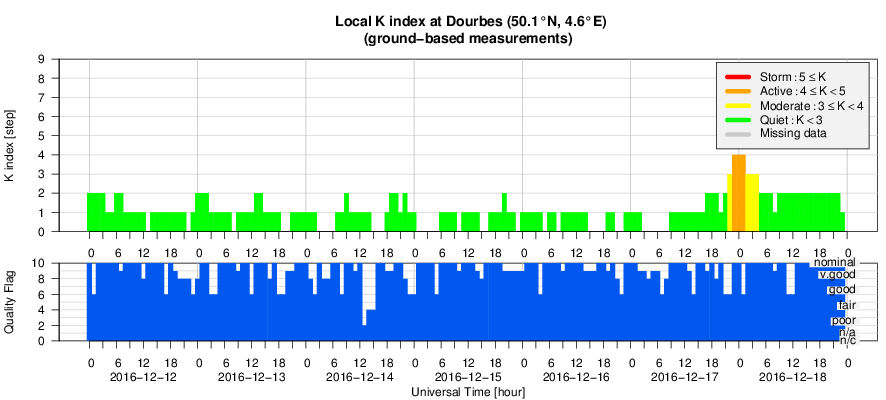- Table of Content
- 1.The first suns...
- 2.ESWW14 - call ...
- 3.PROBA2 Observa...
- 4.Review of sola...
- 5.The Internatio...
- 6.Review of geom...
- 7.Geomagnetic Ob...
- 8.Review of iono...
- 9.Future Events
2. ESWW14 - call for sessions
3. PROBA2 Observations (12 Dec 2016 - 18 Dec 2016)
4. Review of solar activity
5. The International Sunspot Number
6. Review of geomagnetic activity
7. Geomagnetic Observations at Dourbes (12 Dec 2016 - 18 Dec 2016)
8. Review of ionospheric activity (12 Dec 2016 - 18 Dec 2016)
9. Future Events
The first sunspot of cycle 25 is seen!
Breaking news that couldn't wait : May we present to you the very first sunspot of solar cycle 25!
An attentive sunspot observer from USET spotted on December 19 a particular interesting structure in magnetograms. It differed from the other present structures because of its position on the solar disk and the leading black instead of white area. By its high latitude (23°) and reverse polarity, the small magnetic dipole definitely belonged to the next sunspot cycle. If it would get strong enough to produce sunspots, it would make it the very first sunspot group of cycle 25.
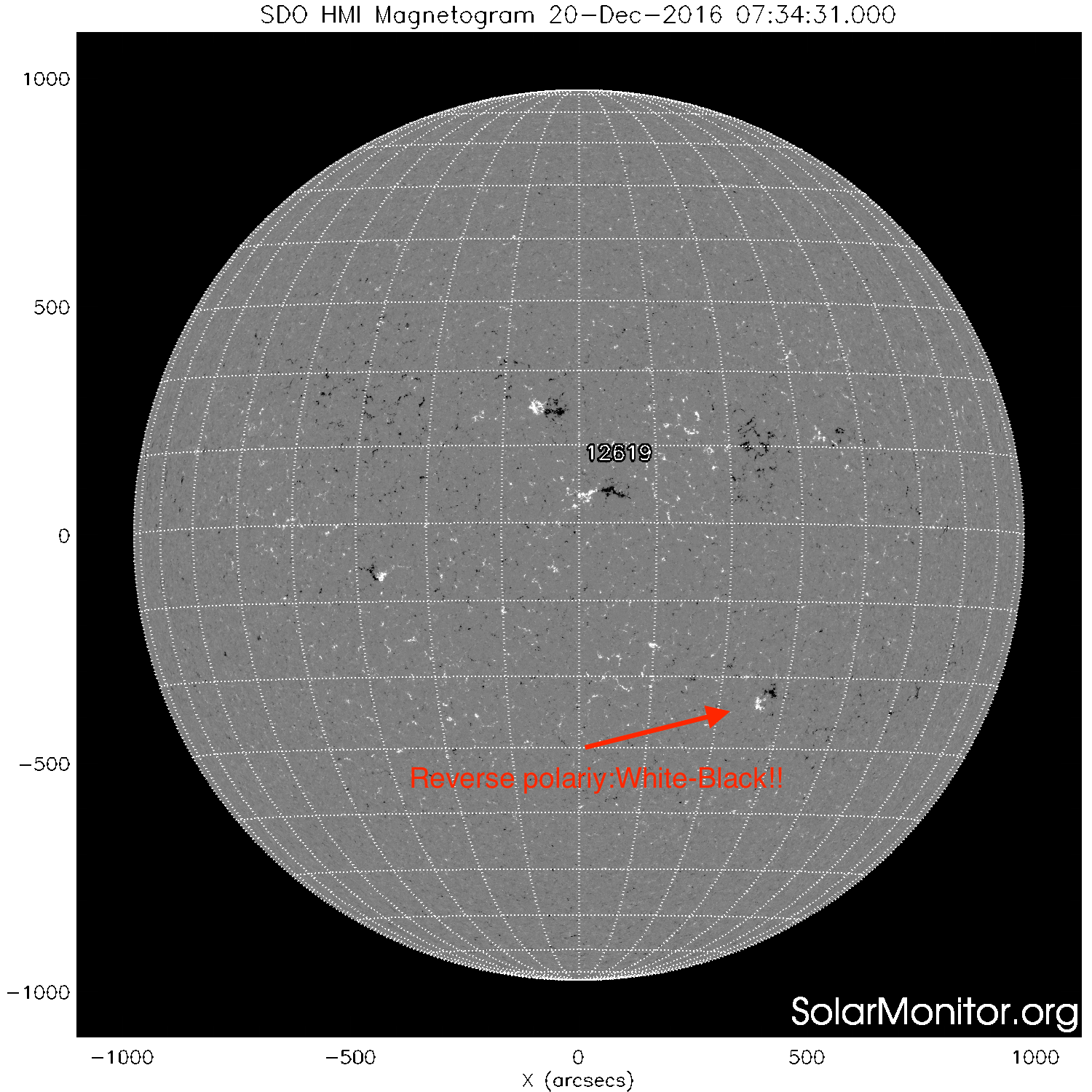
And it did! On December 20, 10:30 UT, 2016, an USET observer made a drawing of sunspot A1.
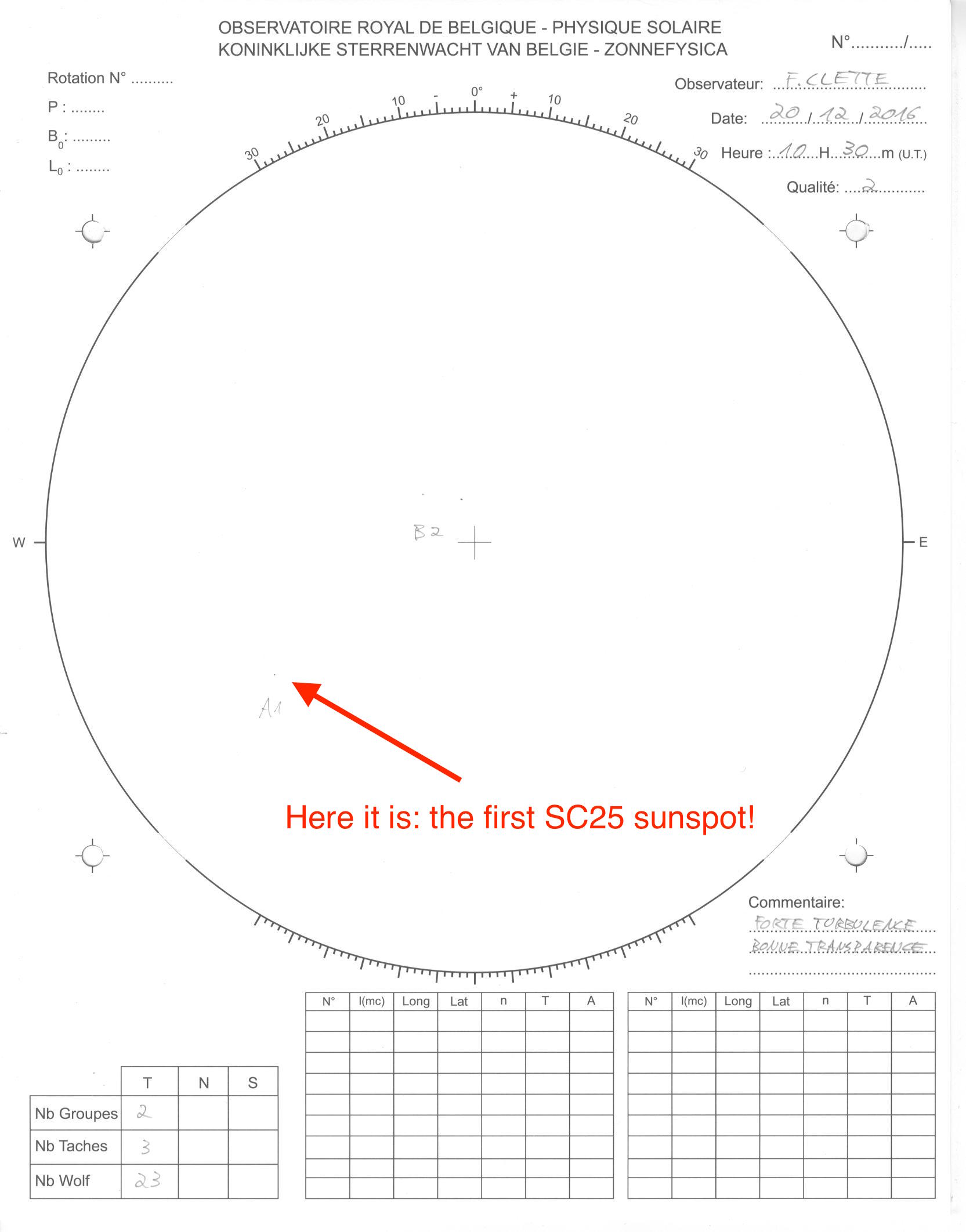
It doesn’t mean that cycle 24 ended. Usually sunspot cycles overlap, up to 4 year. And this is what happens: cycle 24 is heading down and simultaneously, cycle 25 pops up in a very cautious way.
In fact, to be fully realistic, the preparation for a next sunspot cycle starts as soon as the first magnetic fields are generated near the poles. This happens already before the sunspot peak of the ongoing cycle! However, in terms of solar activity, it is only when the cycle generates magnetic fields that are strong enough to produce sunspots that the new sunspot cycle begins.
Typically, the first spots of a cycle emerge at much higher latitudes than the spots of the co-existing previous cycle, which is in its final declining phase, with spot latitudes around 10°.
Exciting!
ESWW14 - call for sessions
European Space Weather Week 14
Belgium, November 27 – December 1, 2017
http://www.stce.be/esww14
Call for Sessions – first announcement
Dear colleagues,
Each year, during the European Space Weather Week (ESWW) conference, people from all over the world gather to discuss the newest insights in space weather and try to find appropriate answers to the challenges and threats that space weather imposes. Science, data exploitation, observations, service development, operational models, engineering, industrial challenges, etc. are all relevant aspects of space weather.
One of the strengths of the conference is that the participants can contribute largely to its content. We start filling the ESWW14 programme with formal sessions that are organised by a fixed format, see: http://www.stce.be/esww14/session.php
We would like to invite and encourage you and your colleagues to submit proposals for sessions on ESWW14.
The ESWW Programme Committee (PC) will decide which of the submitted sessions are accepted. Accepted sessions will be allocated a 2h timeslot for orals and the PC assigns immediately a date. Session conveners will be notified mid February.
Session proposals can be submitted from January 16 onwards at http://www.stce.be/esww14/call4sessions.php.
The deadline for submission is January 26, 2017 5PM (CET).
With kind regards
Mauro Messerotti and Petra Vanlommel, on behalf of the ESWW PC
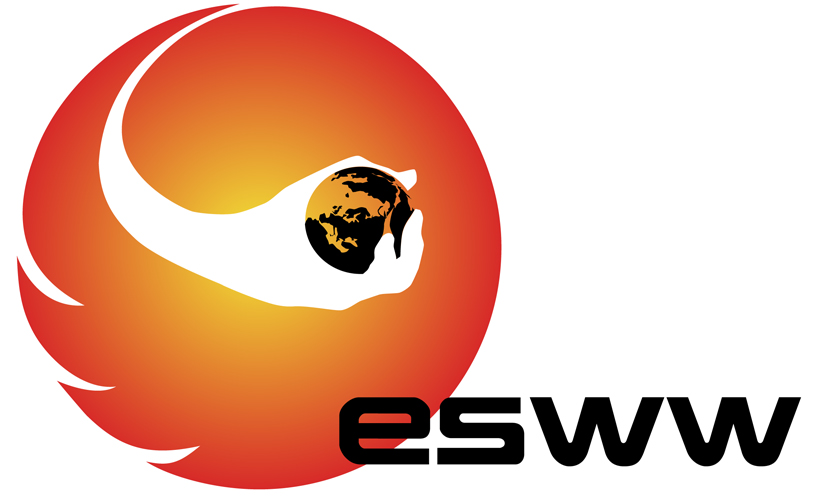
PROBA2 Observations (12 Dec 2016 - 18 Dec 2016)
Solar Activity
Solar flare activity has been very low throughout the week.
In order to view the activity of this week in more detail, we suggest to go to the following website from which all the daily (normal and difference) movies can be accessed: http://proba2.oma.be/ssa
This page also lists the recorded flaring events.
A weekly overview movie can be found here http://proba2.oma.be/swap/data/mpg/movies/weekly_movies/weekly_movie_2016_12_12.mp4(SWAP week 351).
Details about some of this week’s events, can be found further below.
If any of the linked movies are unavailable they can be found in the P2SC movie repository here http://proba2.oma.be/swap/data/mpg/movies/weekly_movies/
Thursday Dec 15
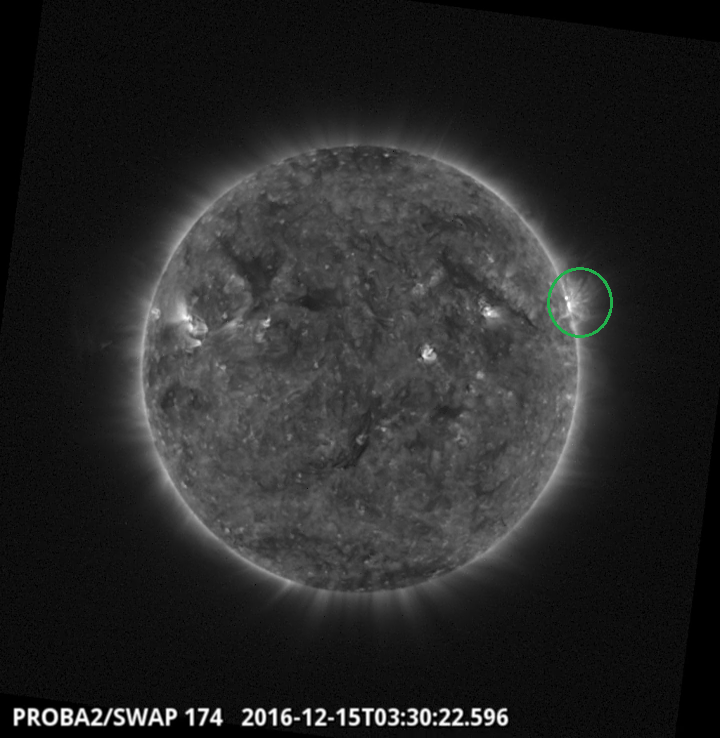
An eruption occurred on the North West Limb at 03:30 on December 15th.
Find a movie of the event here http://proba2.oma.be/swap/data/mpg/movies/20161215_swap_movie.mp4 (SWAP movie)
Sunday Dec 18
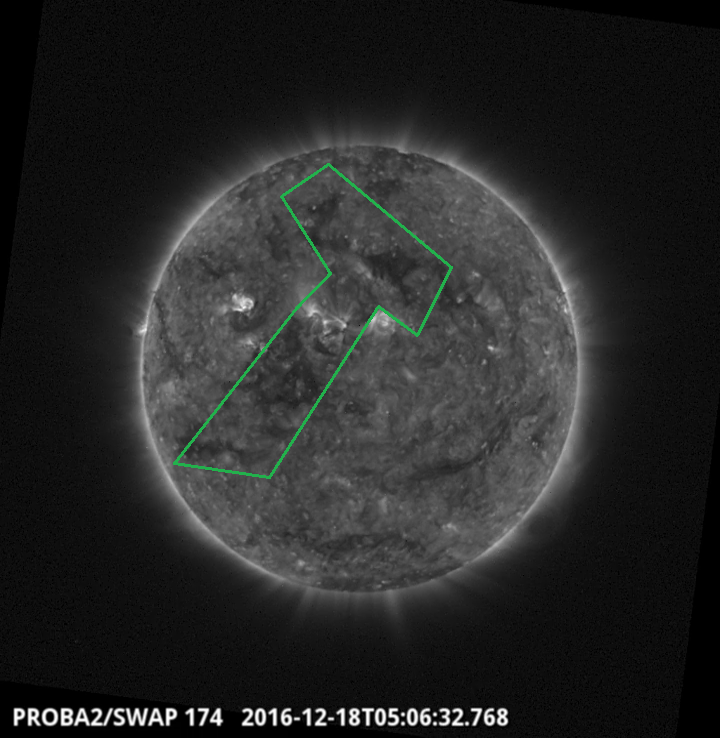
A coronal hole stretching from the north pole to south of the equator
has dominated the solar disk since Dec 14.
Find a movie of the event here http://proba2.oma.be/swap/data/mpg/movies/20161218_swap_movie.mp4 (SWAP movie)
Review of solar activity
Solar activity was extremely low with only five B-class flares and without C-class flares reported.
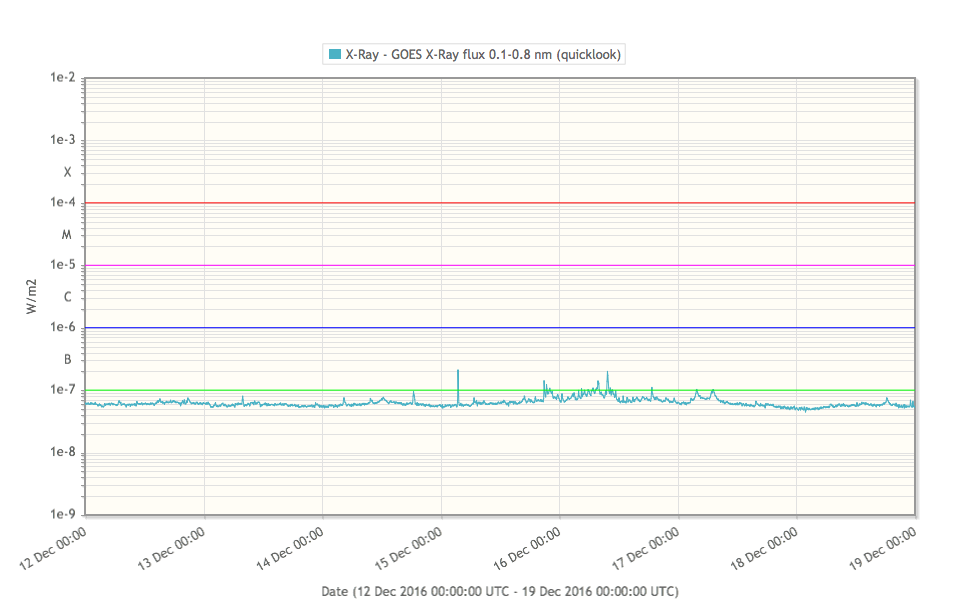
There were only several CMEs observed this week and all except one were narrow (up to 100 degrees of angular width), slow and not Earth directed. The only wide CME observed was a partial halo CME, first seen in the SOHO LASCO C2 field of view at 03:36 UT on December 17. STEREO observations show that the CME was a back side event and will therefore not arrive to the Earth.
There were four coronal holes (CH) observed this week. Two of them were rather small; the equatorial coronal hole which reached the central meridian in the morning of December 12, and the coronal hole (located between S08 and S12) which reached the central meridian early on December 13. The other two coronal holes observed this week were; the large low latitude extension of the northern polar coronal hole which reached central meridian in the afternoon of December 15, and the large equatorial coronal hole (extending to about S25) which reached central meridian in the midday of December 18.

The International Sunspot Number
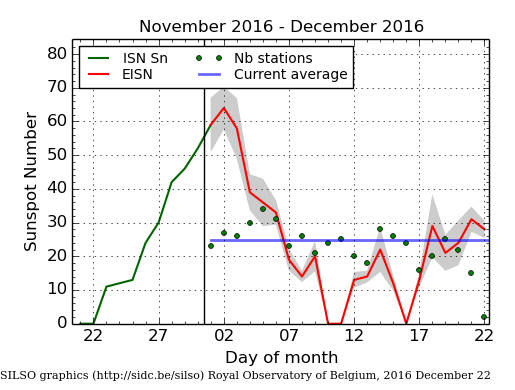
The daily Estimated International Sunspot Number (EISN, red curve with shaded error) derived by a simplified method from real-time data from the worldwide SILSO network. It extends the official Sunspot Number from the full processing of the preceding month (green line). The plot shows the last 30 days (about one solar rotation). The horizontal blue line shows the current monthly average, while the green dots give the number of stations included in the calculation of the EISN for each day.
Review of geomagnetic activity
First two days of the week the solar wind speed was slowly decreasing from about 550 km/s to 400 km/s (remnants of the high speed stream). The rest of the week solar wind speed was mostly fluctuating around 400 km/s.
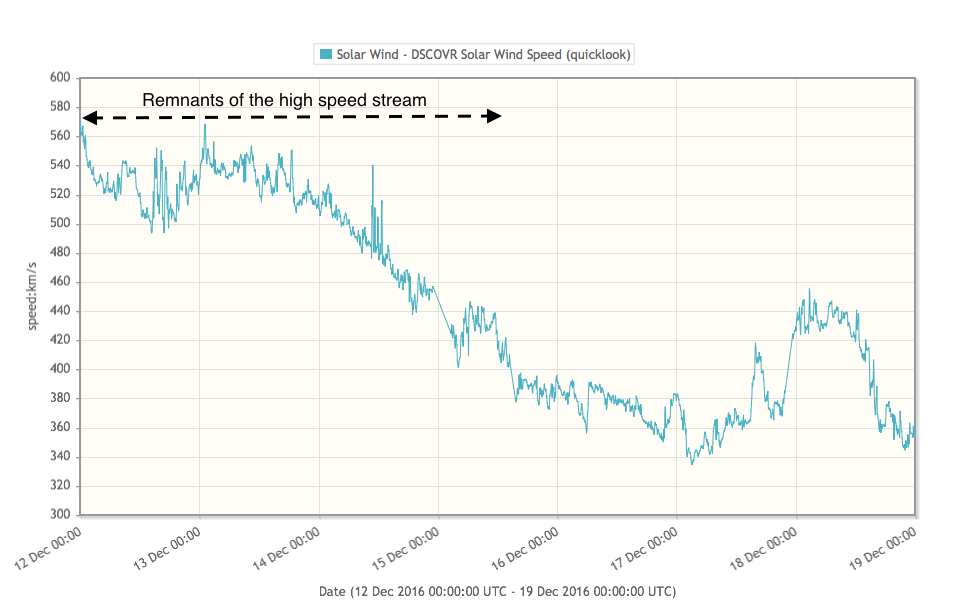
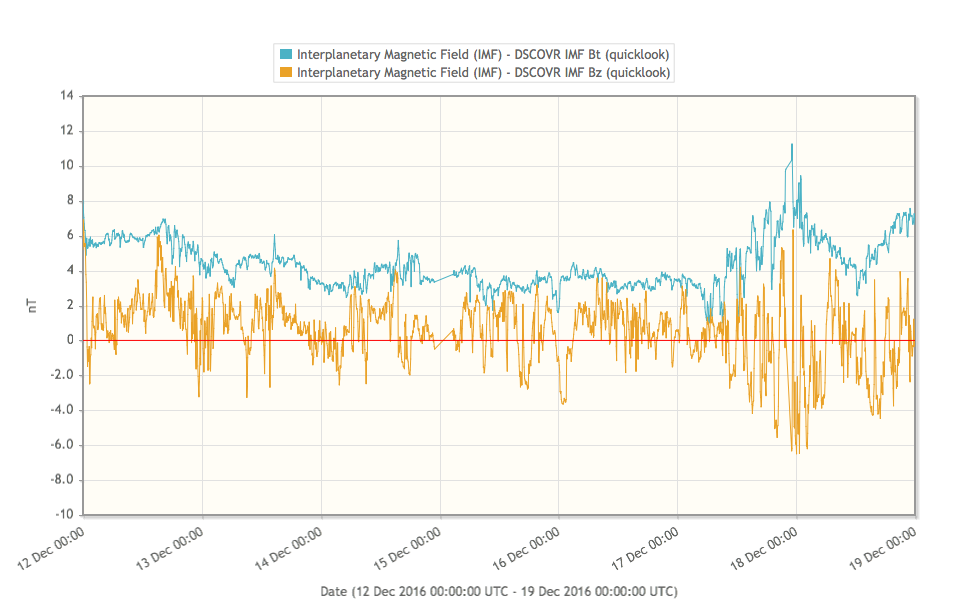
During the whole week, except one isolated interval of couple of hours, the geomagnetic conditions were quiet.
Due to longer intervals of negative value of the Bz component of the interplanetary magnetic field (down to -8nT) and slight increase of the solar wind speed (up to about 450 km/s), active geomagnetic conditions were reported around midnight of December 17 and early morning of December 18 (local station at Dourbes reported K=4).
Review of ionospheric activity (12 Dec 2016 - 18 Dec 2016)
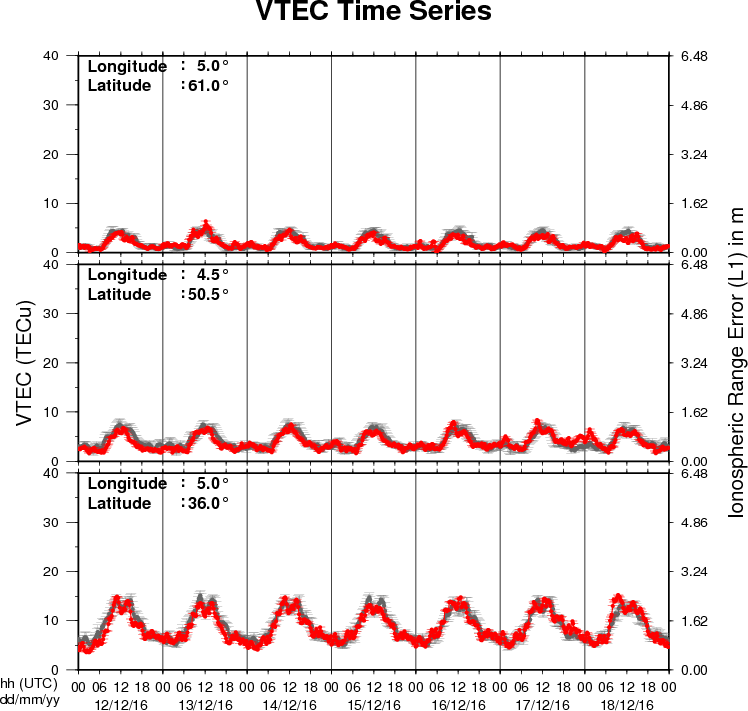
The figure shows the time evolution of the Vertical Total Electron Content (VTEC) (in red) during the last week at three locations:
a) in the northern part of Europe(N61°, 5°E)
b) above Brussels(N50.5°, 4.5°E)
c) in the southern part of Europe(N36°, 5°E)
This figure also shows (in grey) the normal ionospheric behaviour expected based on the median VTEC from the 15 previous days.
The VTEC is expressed in TECu (with TECu=10^16 electrons per square meter) and is directly related to the signal propagation delay due to the ionosphere (in figure: delay on GPS L1 frequency).
The Sun's radiation ionizes the Earth's upper atmosphere, the ionosphere, located from about 60km to 1000km above the Earth's surface.The ionization process in the ionosphere produces ions and free electrons. These electrons perturb the propagation of the GNSS (Global Navigation Satellite System) signals by inducing a so-called ionospheric delay.
See http://stce.be/newsletter/GNSS_final.pdf for some more explanations ; for detailed information, see http://gnss.be/ionosphere_tutorial.php
Future Events
For more details, see http://www.spaceweather.eu/en/event/future
4th SOLARNET Meeting: The Physics of the Sun from the Interior to the Outer Atmosphere, in Lanzarote (Spain)
Start : 2017-01-16 - End : 2017-01-20
The IV SOLARNET MEETING 'The physics of the Sun from the
interior to the outer atmosphere' will take place in Lanzarote
(Spain) from 16th to 20th of January 2017, organized by the
Instituto de AstrofÃsica de Canarias (IAC).
SOLARNET (High-resolution Solar Physics Network) is an EU-FP7
project coordinated by IAC with the aim of bringing together and
integrating the major European research infrastructures in the
field of high-resolution solar physics. SOLARNET involves all
pertinent European research institutions, infrastructures, and data
repositories. Networking activities, access to first-class
infrastructures and joint research and development activities are
being covered under SOLARNET to improve, in quantity and quality,
the service provided by this European community.
The purpose of this conference is to provide a coherent picture
of the Sun as a single physical system playing all the underlying
physical processes measured and observed in the solar atmosphere to
date.
Website:
http://www.iac.es/congreso/solarnet-4meeting/
Solar Orbiter Workshop 7: Exploring the solar environs in Granada, Spain
Start : 2017-04-03 - End : 2017-04-06
This event will be hosted by the Instituto de Astrofisica de
Andalucia - CSIC. Please mind that on April 7th the 20th SWT
meeting will take place at the same venue.
Website: Unkown
